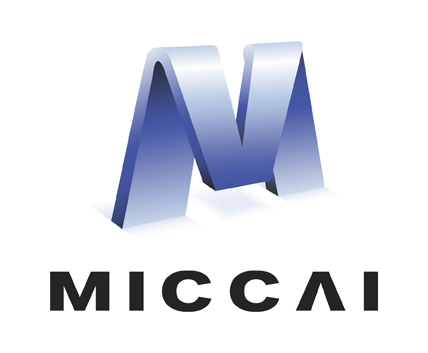Abstract
Accurate pancreas segmentation is crucial for diagnosing and managing pancreatic diseases, facilitating preoperative planning, and aiding transplantation procedures. Effective segmentation enables the identification and monitoring of conditions such as chronic pancreatitis and diabetes mellitus, which are characterized by changes in pancreatic size and volume. Recent advancements in segmentation technology have leveraged foundation models like SAM and MedSAM, achieving state-of-the-art performance in various domains. In this work, we explore the effectiveness of using these models in the particularly challenging domain of pancreas segmentation. We also propose a simple yet effective method for including 3D information into SAM. Our findings suggest that, despite foundation models have a good general knowledge, they are not well-suited for pancreas segmentation without significant architectural modifications and the inclusion of a good prompt. Moreover, we found that simply including volume information significantly enhances segmentation performance, even without the use of an expert prompt.
Access this chapter
Tax calculation will be finalised at checkout
Purchases are for personal use only
Similar content being viewed by others
References
Busireddy, K.K., et al.: Pancreatitis-imaging approach. World J. Gastrointest. Pathophysiol. 5(3), 252–270 (2014)
Campbell-Thompson, M.L.: The influence of type 1 diabetes on pancreatic weight. Diabetologia 59(1), 217–221 (2016)
Çiçek, Ö., Abdulkadir, A., Lienkamp, S.S., Brox, T., Ronneberger, O.: 3D U-Net: learning dense volumetric segmentation from sparse annotation. In: Ourselin, S., Joskowicz, L., Sabuncu, M.R., Unal, G., Wells, W. (eds.) MICCAI 2016. LNCS, vol. 9901, pp. 424–432. Springer, Cham (2016). https://doi.org/10.1007/978-3-319-46723-8_49
Dosovitskiy, A., et al.: An image is worth 16x16 words: transformers for image recognition at scale. http://arxiv.org/abs/2010.11929
Farag, A., Lu, L., Roth, H.R., Liu, J., Turkbey, E., Summers, R.M.: A bottom-up approach for pancreas segmentation using cascaded superpixels and (Deep) image patch labeling. IEEE Trans. Image Process. 26(1), 386–399 (2017)
Kirillov, A., et al.: Segment Anything. In: 2023 IEEE/CVF International Conference on Computer Vision (ICCV), pp. 3992–4003 (2023)
Lei, W., Wei, X., Zhang, X., Li, K., Zhang, S.: Medlsam: Localize and segment anything model for 3d medical images. arXiv preprint arXiv: (2023)
Lim, S.H., Kim, Y.J., Park, Y.H., Kim, D., Kim, K.G., Lee, D.H.: Automated pancreas segmentation and volumetry using deep neural network on computed tomography. Sci. Rep. 12(1), 4075 (2022)
Ma, J., He, Y., Li, F., et al.: Segment anything in medical images. Nat. Commun. 15, 654 (2024)
Nishio, M., Noguchi, S., Fujimoto, K.: Automatic pancreas segmentation using coarse-scaled 2D model of deep learning: usefulness of data augmentation and deep u-net. Appl. Sci. 10(10) (2020)
Oktay, O., et al.: Attention U-Net: learning where to look for the pancreas. In: MIDL (2018)
Proietto Salanitri, F., Bellitto, G., Irmakci, I., Palazzo, S., Bagci, U., Spampinato, C.: Hierarchical 3D feature learning for pancreas segmentation. In: Lian, C., Cao, X., Rekik, I., Xu, X., Yan, P. (eds.) MLMI 2021. LNCS, vol. 12966, pp. 238–247. Springer, Cham (2021). https://doi.org/10.1007/978-3-030-87589-3_25
Sasamori, H., Fukui, T., Hayashi, T., Yamamoto, T., Ohara, M., Yamamoto, S., Kobayashi, T., Hirano, T.: Analysis of pancreatic volume in acute-onset, slowly-progressive and fulminant type 1 diabetes in a Japanese population. J. Diabetes Investig. 9(5), 1091–1099 (2018)
Wang, H., et al.: Sam-med3D (2023)
Zhang, Z., et al.: Large-scale multi-center CT and MRI segmentation of pancreas with deep learning (2024)
Zhang, Z., Yao, L., Keles, E., Velichko, Y., Bagci, U.: Deep learning algorithms for pancreas segmentation from radiology scans: a review. Adv. Clin. Radiol. 5(1), 31–52 (2023)
Zhou, Y., et al.: Hyper-pairing network for multi-phase pancreatic ductal adenocarcinoma segmentation. Lecture Notes in Computer Science (including subseries Lecture Notes in Artificial Intelligence and Lecture Notes in Bioinformatics) 11765 LNCS, pp. 155–163 (2019). https://doi.org/10.1007/978-3-030-32245-8_18
Acknowledgements
S. Calcagno acknowledges financial support from PNRR MUR project PE0000013-FAIR.
Author information
Authors and Affiliations
Corresponding author
Editor information
Editors and Affiliations
Rights and permissions
Copyright information
© 2025 The Author(s), under exclusive license to Springer Nature Switzerland AG
About this paper
Cite this paper
Rapisarda, E., Gravagno, A.G., Calcagno, S., Giordano, D. (2025). Assessing the Efficacy of Foundation Models in Pancreas Segmentation. In: Proietto Salanitri, F., et al. Artificial Intelligence in Pancreatic Disease Detection and Diagnosis, and Personalized Incremental Learning in Medicine. PILM AIPAD 2024 2024. Lecture Notes in Computer Science, vol 15197. Springer, Cham. https://doi.org/10.1007/978-3-031-73483-0_1
Download citation
DOI: https://doi.org/10.1007/978-3-031-73483-0_1
Published:
Publisher Name: Springer, Cham
Print ISBN: 978-3-031-73482-3
Online ISBN: 978-3-031-73483-0
eBook Packages: Computer ScienceComputer Science (R0)





